Related Research Articles
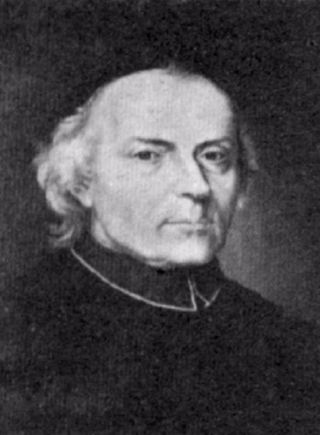
Lodovico Antonio Muratori, commonly referred to in Latin as Muratorius, was an Italian Catholic priest, notable as historian and a leading scholar of his age, and for his discovery of the Muratorian fragment, the earliest known list of New Testament books.
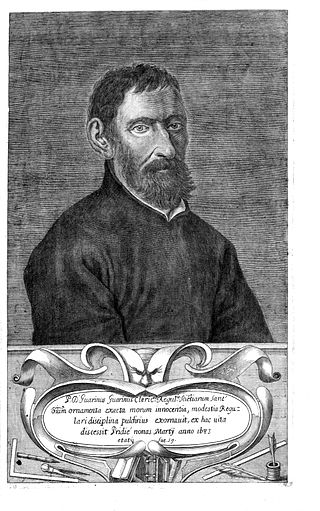
Camillo Guarino Guarini was an Italian architect of the Piedmontese Baroque, active in Turin as well as Sicily, France and Portugal. He was a Theatine priest, mathematician, and writer. His work represents the ultimate achievement of Italian Baroque structural engineering, creating in stone what could be attempted today in reinforced concrete.
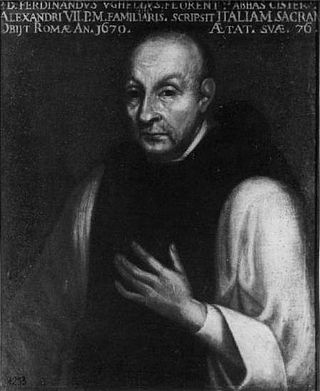
Ferdinando Ughelli was an Italian Cistercian monk and church historian.

Filadelfo Mugnos was an Italian historian, genealogist, poet, and man of letters.
Lodovico Ricci (1742–1799) was an Italian historian and economist.
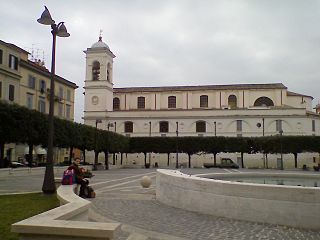
The Diocese of Albano is a Latin suburbicarian see of the Diocese of Rome in Italy, comprising seven towns in the Province of Rome. Albano Laziale is situated on the Appian Way some 15 kilometers from Rome.
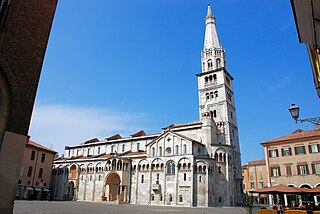
The Archdiocese of Modena–Nonantola is a Latin archdiocese of the Catholic Church in Italy. It existed as the Diocese of Modena in central Italy from the 4th century. Originally it was a suffragan the diocese of Milan, but later became a suffragan of Ravenna. Because of the schism of the Antipope Clement III, Pope Paschal II released Modena from obedience to the church of Ravenna, but Pope Gelasius II restored the previous status. Modena continued as a suffragan of Ravenna until 1582, when the Archdiocese of Bologna was created by Pope Sixtus V in the Bull Universi orbis of 1 December 1582, and was assigned Modena as one of its suffragans.

The Archdiocese of Ferrara-Comacchio is a Latin Church archdiocese of the Catholic Church. It has existed since 1986, when the diocese of Comacchio was combined with the historical archdiocese of Ferrara. It is a suffragan of the archdiocese of Bologna.

Girolamo Graziani was an Italian poet and diplomat.

Domenico Troili (1722–1792) was an Italian abbate and a Jesuit, who held the appointment of custodian of the library of the ruling family of Este in Modena. He is recognized as the first person who documented the fall of a meteorite, in 1766.
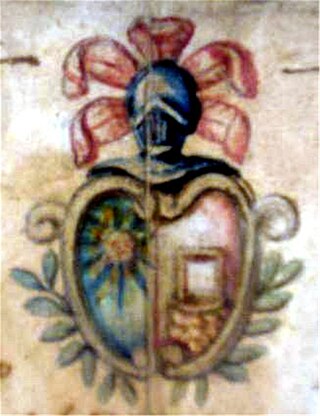
Pozzo Ardizzi surname comes from the city of Vigevano province of Pavia, Italy, which was formed around the middle of the fifteenth century from a branch of the family that is separated from the noble surname Ardizzi.

il Conquisto di Granata is an epic poem in 26 cantos by the Italian poet Girolamo Graziani first published in Modena in 1650. The poem tells the last year of the siege of Granada led by Ferdinand II of Aragon with which ended the reconquista of the Muslim-controlled areas of the Iberian Peninsula broadly known as Al-Andalus.
The following is a timeline of the history of the city of Modena in the Emilia-Romagna region of Italy.
Francesco de' Marini (1630–1700) was a Roman Catholic prelate who served as Titular Archbishop of Teodosia (1676–1700), Titular Archbishop of Amasea (1671–1676), Bishop of Molfetta (1666–1670), and Bishop of Albenga (1655–1666).

Camillo Tutini was an Italian historian, mainly of the Neapolitan region.
Pietro degli Antonii was an Italian composer.

Il Messaggiere, from 1800 Il Messaggere, was a newspaper published in Modena between 1749 and 1859, with some interruptions during the Napoleonic era. It was the official newspaper of the Duchy of Modena and Reggio.
Ambrogio Del Giudice, also known as Ambrosius de Altamura or just Altamura, was an Italian Dominican and historian.
Rerum italicarum scriptores ab anno æræ christianæ quingentesimo ad millesimumquingentesimum is a collection of texts which are sources for Italian history from the 6th to the 15th century, compiled in the 18th century by Ludovico Antonio Muratori.
Andrea Lazzari was an Italian historian and clergyman, known for his significant contributions to the history of Urbino.
References
Citations
- 1 2 Literary Historians of Italy, Google Books
- ↑ Ottley, William Young (1816). An Inquiry Into the Origin and Early History of Engraving: Upon Copper and in Wood, with an Account of Engravers and Their Works, from the Invention of Chalcography by Maso Finiguerra, to the Time of Marc' Antonio Raimondi. Harvard University: Printed for J. and A. Arch by J. M'Creery. p. 552.
Lodovico Vedriani.
- ↑ Vedriani, lodovico (1666). Historia dell' antichissima città di Modona. Oxford University: Per Bartolomeo Soliani.
Lodovico Vedriani.